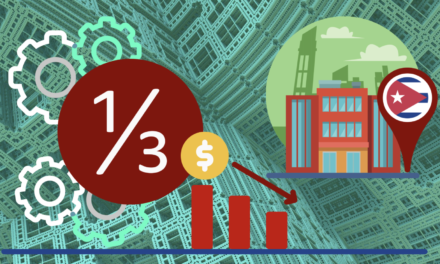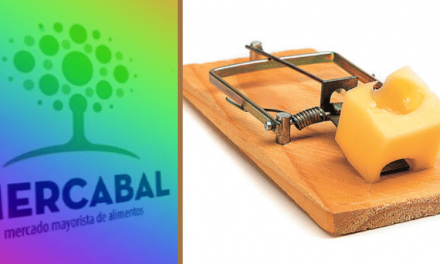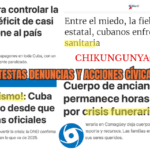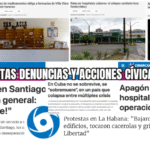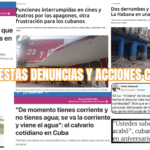Cuba this year will have its worst harvest since 1850. The regime of Raúl “The Cruel” announced a few days ago that the 2022-2023 harvest, already in its final throes, will produce some 350,000 tons of sugar.
Compare that to the 396,000 tons per year (25% of world production at the time) that were produced on average between 1850 and 1859; or the 696,000 tons per year during the Ten Years’ War, between 1870-1879; or with the 2.7 million tons per year that were produced between 1910 and 1919, more than a century ago.
The data previously mentioned can be found in the book “El Ingenio“, a monumental piece from the Cuban historian (who died in exile) Manuel Moreno Fraginals. Worse, in 1894, before the War of Independence, Cuba already reached one million metric tons of sugar (1.1 million MT), a third of all the sugar produced in the entire world that year.
Sugar became rooted in Cuban national culture
Meanwhile, 129 years later, the “Cuban revolution” produces such a small amount of sugar that it cannot export it and must import sugar in large quantities, even from the United States; this is the final straw.
In 2023, the total production of sugar, which has not varied much from when it was initially announced, is 150,000 MT below national consumption, which has been reduced by the regime to 500,000 MT, when it really is about 700,000 tons.
And we are talking about Cuban’s “salary.” Since the late eighteenth century sugar was rooted in Cuban national culture. During the pre- revolutionary era, Cuban Children (including this columnist) would draw a hut, cows grazing under palm trees, and the image always included a fireplace in the distance spewing smoke. The sugar mills were a constant in the island children’s imagery.
Sugar began to be obtained in solid form 2,500 years ago in India and Persia. The cane was brought to Spain by the Arabs; Christopher Columbus introduced it to Hispaniola on his third voyage, in 1498, and Diego Velázquez took it to Cuba in 1523.
Cuba: world sugar producer since the times of Napoleon and Bolivar
The French Saint Domingue (Haiti), with slave labor, was in 1750 the world’s largest producer and exporter of sugar. But in 1791, the Spanish took advantage of the chaos resulting from the French Revolution: the independence rebellion led by Toussaint L’Ouverture broke out in Haiti where local slaves destroyed the mills in which they were forced to work.
The rebellion in Haiti led to a colossal sugar expansion in Cuba. Francisco de Arango y Parreño was a big proponent of this expansion and was a Havana landowner, lawyer, politician, brilliant liberal economist, and promoter of the creation of the Economic Society of Friends of the Country in the late eighteenth and early nineteenth centuries.
That is, Cuba had the largest and most efficient sugar industry in the world since the times of Napoleon Bonaparte, Simon Bolivar, Mendeleev, Beethoven, Chopin, the priest Hidalgo, Charles Darwin, Sarah Bernhardt, Thomas Edison, Victor Hugo, or Louis Pasteur; all those great geniuses knew that Cuba was the “queen of sugar”.
Communism at the beginning knocked down production by 3 million MT
But the commander arrived, whose name I do not want to remember, and “ordered to stop” the impetuous development that took place in Cuba in the mid-twentieth century. It is worth knowing that in the 1950s, the island exported half of all the sugar traded in the world and produced between 5.3 and 7.1 million MT.
In 1959-1960, the last capitalist harvest in Cuba, 5.6 million tons of sugar were produced in the island’s 156 factories, all in private hands. But in the late 1960s, the Castro brothers and an Argentine adventurer named Che Guevara raided the country’s power plants at gunpoint and nationalized them without paying a penny to anyone, dismantling 130,000 hectares of cane in the process.
What were Castro’s results? As early as the second communist harvest, 1961-1962, production fell by 2.0 million tons. In the third Marxist-Leninist campaign (1962-1963) and with thousands of office workers and university professionals as “volunteers” cutting cane, only 3.9 million tons were produced, almost three million less than in 1961.
Then, in 2002, the Destroyer-in-Chief made a decision without consulting the Political Bureau of the Party to disassemble 95 of the 156 plants that existed in the country. It subsequently dismantled five other factories. Overall, fifty-six power plants were left standing. Some are already in such poor technical condition, or with so little cane crop, that they might as well be obsolete. Only 23 of the 56 sugar mills ground cane in this 2022-2023 harvest.
The Castros and Che proved it: “Without sugar there is no country”
Let’s try to imagine that Arango and Parreño, the then colonist and sugar industrialist, along with patriot Carlos Manuel de Céspedes and José Manuel Casanova then known as the “Cuban sugar czar” (during the 30s and 40s of the twentieth century) and author of the phrase “without sugar there is no country“, had been told that Cuba would stop exporting sugar and would not have to import it to satisfy national demand; they would have had fun with such a witty joke.
Only 22 years ago, in 2001, Cubans were surprised that the five pounds of sugar that were delivered to them by the “Libreta” came from Brazil. Between 2001 and 2006, Brazil exported 384,204 tons of sugar to Cuba; Colombia, 425,609 tons between 2002 and 2006. Sugar also arrives in Cuba from Belarus, France, the Dominican Republic and even the United States, which was by far the largest importer of Cuban sugar for 160 years.
Possibly the lowest industrial yields in the world
Moreover, since 1967 Cuban cane yields per hectare are the lowest in the Americas and possibly the world. After 1962, Cuban sugarcane plantations have never even reached the 69-76 tons of cane per hectare of the world average. According to the National Office of Statistics and Information (ONEI), since 2002 the Cuban average has ranged between 24 and 41 tons per hectare.
But in Peru, Guatemala and Colombia they obtain between 93 and 120 tons of cane per hectare; Brazil between 80 and 90; El Salvador, 82; Honduras, 70; Mexico 75-85 tons and in Puebla reach up to 125 tons. And in Africa, for example, Swaziland gets between 100 and 125 tons/ha. Before 1959, no Latin American or African nation surpassed Cuba in sugarcane yields.
And as for the industrial yield, known as “pol en caña“, today Cuba barely exceeds 10% of obtaining sugar for every 100 parts of green cane; compare this to the 1940s when cuba set an unbeatable world record of 13.7% of industrial sugar yield.
Without sugar to cover demand, what will the dictatorship do?
The phrase of the landowner (Mr. Casanova as mentioned above) is for many (including the author of this article) a magnificent metaphor to highlight the importance of the sugar industry; How Ironic that the Castro brothers proved the phrase to be true. Today in Cuba, there is no sugar, nor really a country; just a gigantic prison that lays in ruins, releasing its pieces.
This “achievement of the socialist revolution” leaves the Cuban Regime with a simple choice: 1) either imports on fuel, food, medicine, raw materials, and everything are further reduced, to import at least 150,000 tons of sugar and deliver at least 3.5 pounds for the “Libreta” to the 10.6 million Cubans, and to supply (barely) the tourist industry, food, hospitals, restaurants, private businesses, etc.; or 2) no sugar is imported, or very little, and a multiplied July 11 social uprising is encouraged, or much more.
No one knows what the regime will do. But the truth is that Raul Castros Regime has no “cash” to get out of this unscathed. Neither Moscow, nor Beijing, nor anyone, gives anything away to anyone for free, no matter how “friendly” and “fraternal” the relationship may be.
And with less sugar to steal from the warehouses of the plants, prices will reach the stratosphere. If today on the black market a pound of sugar costs 200 pesos, how much will it cost in a month, or two? And will there be any sugar left?




